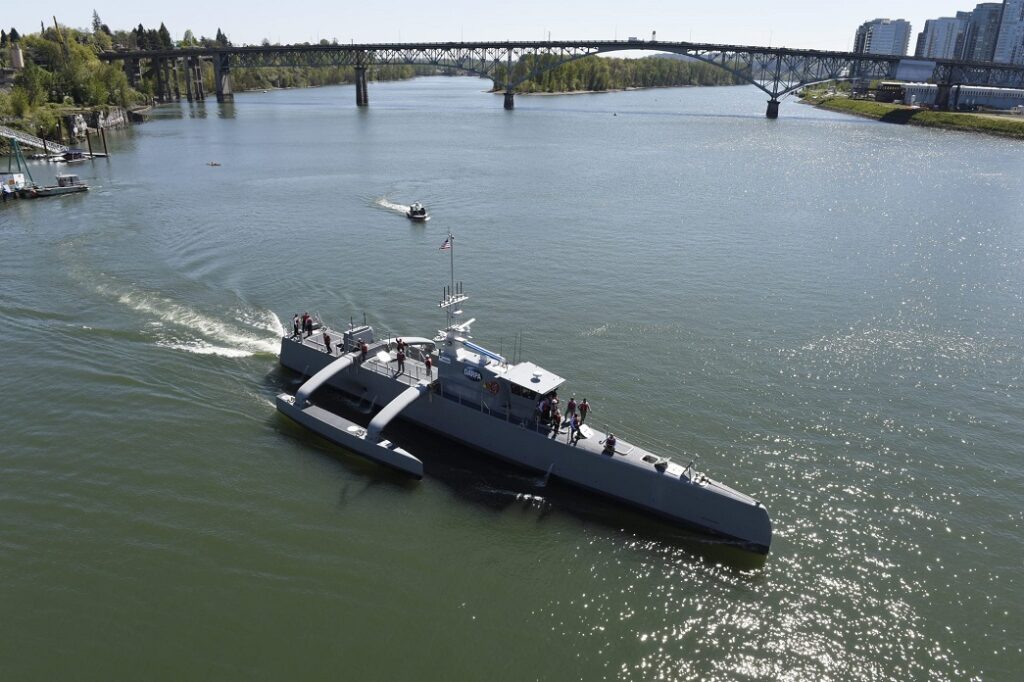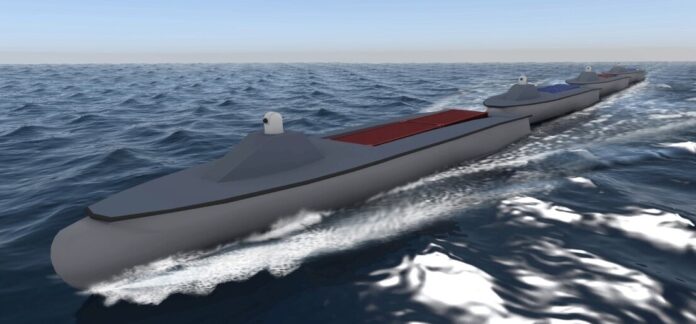Textron Systems is developing a system that allows multiple individual unmanned surface vehicles (USVs) to autonomously work together as coordinated sea trains, overcoming individual vessel range limitations through wave reduction efficiencies.
This autonomy engine is being supplied to Applied Physical Sciences (APS), a subsidiary of General Dynamics, for the Defense Advanced Research Projects Agency (DARPA) Sea Train program.
“USVs autonomously collaborating to complete such a complex mission from end-to-end without any human interaction has never been done before,” said Sean Baity, Technical Director, Applied Technologies and Advanced Programs. “But solving tough, real-world robotic problems in difficult and dangerous environments is what we do at Textron Systems. And with our multi-domain unmanned technology experience, we’re up for the challenge. We look forward to continuing our collaboration with APS and DARPA to enable the intelligent motion of autonomous teams to achieve and do more.”
During the 18-month phase one of the programs, Textron Systems is coding software to develop autonomy between the vessels and rigorously testing the capabilities by simulating various environmental conditions and sea states. In phase two, scale models will be built and tested over the course of an additional 18 months.

DARPA Sea Train project:
The Sea Train program aims to demonstrate long-range deployment capabilities for a distributed fleet of tactical unmanned surface vessels. The program seeks to enable extended transoceanic transit and long-range naval operations by exploiting the efficiencies of a system of connected vessels (Sea Train).
The goal is to develop and demonstrate approaches that exploit wave-making resistance reductions to overcome the range limitations inherent in medium unmanned surface vessels. DARPA envisions sea trains formed by physically connecting vessels with various degrees of freedom between the vessels, or vessels sailing in collaborative formations at various distances between the vessels.
Check out Naval Library App to find out the specifications of the U.S. Navy’s unmanned systems.





